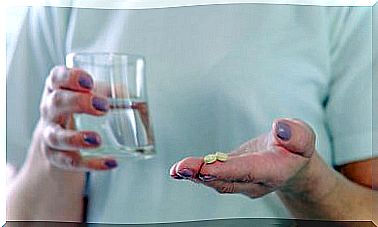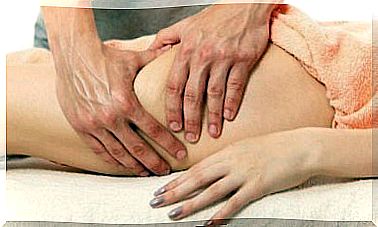Hazard Injured His Right Psoas: Why Could It Have Happened?
Eden Hazard injured his right psoas, a powerful large muscle that will knock him out of competition once again. The Real Madrid footballer has had recent news about his repetitive problems associated with training and match disputes.
Although the problem this time does not seem to be linked, in the first instance, to the previous ones, it is worth remembering the athlete’s medical history. Well, since he is part of the Spanish team he has accumulated 9 injuries that did not let him play too much. This would be the tenth.
Let’s see, then, what were the last previous muscular and joint disorders, what it means that Hazard has now injured his right psoas and the anatomical repercussions of this muscle. Go for it.
Hazard injured his right psoas, but had more problems before
Eden Hazard’s last injury was a muscle tear in the left anterior rectus. This is one of the parts that make up the quadriceps, in the front part of the thigh. In that space between the hip and the knees, powerful and organized fibers are concentrated that allow the performance of various sports, including soccer.
A left anterior rectus tear is not always the same in everyone. For athletes there is greater risk due to the overexertion that training and strenuous seasons of games and competition imply. In clinical terms, muscle tears are classified into 4 degrees of severity:
- First degree: no more than 5% of the muscle in question is affected. Sometimes it is even impossible to locate the damaged area with an ultrasound.
- Second degree: the fibers separate up to 3 centimeters.
- Third degree: the tear is greater than 3 centimeters and the aponeurosis, which is the fibrous layer that surrounds the muscle tissue, is damaged. There is usually a hematoma, that is, a collection of blood that occupies space, generates pressure and pain.
- Fourth degree: it is the most serious form of all. The tear is complete across the width of the affected muscle and the hematoma tends to be of considerable size. It is disabling and surgical resolution is usually indicated.
We do not know what was the degree of muscle tear of Eden Hazard’s quadriceps. However, it is striking that, despite complying with the indicated rest and rehabilitation techniques, he has hurt himself again. This time the affected one is the psoas muscle, on which we will delve to understand it.

What is the psoas muscle that Hazard injured and where is it located?
The psoas is actually a part of a larger compound muscle that we call the iliopsoas. Between the diaphragm and the spinal column above to the pelvis and the femur below, this mass of fibers extends that are responsible for flexing the hip.
We can say, then, that it is better to describe each section on its own, always remembering that Hazard injured his psoas:
- Iliac portion: joins the iliac crest of the hip, touches the sacrum, fills part of the internal iliac fossa, and forms the iliolumbar ligament. It then exits the pelvis through the femur arch, below the inguinal ligament, and reaches the femur.
- Psoas portion: it is born in the last thoracic vertebra and in the lumbar, joined to the vertebral column, and then goes down to the iliac fossa, where it will join with the portion that we have already described.
When analyzing the size, it is logical to consider the interactions that the iliopsoas has with various other structures of the body. It is found in relation to the abdominal organs and to a series of nerves and plexuses that transmit sensitive information.
This link with the central nervous system has generated, in traditional medicine, approach and meditation techniques that aim to stimulate a supposed channeling of energy between the abdominal organs, the renal system and the vital balance. Of course, these are anecdotal functions based on the preeminence that muscle has for posture.
Strictly speaking, the psoas does the following:
- It is activated when walking, and favors that we do it on two legs, unlike other animals.
- It supports the normal curvatures of the spine, especially the one that goes forward in the lower back.
- Stabilizes the sacrum so that it does not lose the central axis.
Can Hazard’s latest injuries be related?
We could attribute Hazard’s injury to the psoas, also to overuse. Just as in his last tear the possibility of muscle fatigue or repetitive micro-injuries was considered, it would not be surprising that this new disorder is linked to the same causes.
In any case, we must remember that the injuries are happening on the opposite side. The quadriceps tear was left and the psoas injury was to the right. This does not remove a possible link. The body tends to compensate with greater effort on the healthy side if there is a problem in one half of the body.
We would say that a hypothesis is that – as the lower left limb has suffered – in training and rehabilitation the right part could have been recharged to compensate. Those extra contractions and excessive efforts would cause increased sensitivity.
Of course, we are in the realm of assumptions. The only thing clear is that Eden Hazard’s injury to the right psoas translates into dates that he will not be able to dispute. Once again, the treatment of rigor is rest, perhaps with the help of anti-inflammatories and a rehabilitation process with kinesiology and physical therapy.

Can a psoas injury be prevented?
An overload of the psoas, such as the one that a soccer player may have, is prevented from training and the correct performance of efforts. Also with the regulation of the number of exercises and giving space to rest for the fibers.
Sometimes, there are incipient signs that warn of what will come. There may be vague pain in the thigh or lower back, as well as extreme fatigue in the lower limbs in athletes who do not tire easily on a regular basis.
In those cases, when there is a specific notice, what is recommended is the following:
- Reduce the intensity of the exercises.
- Perform specific stretches for this muscle, more frequently than usual.
- Massage the lumbar and abdominal region, describing a path from top to bottom, in the direction of the groin.
There are times when prevention becomes almost impossible. To do this, all that remains is to abide by rest and put yourself in the hands of specialized professionals who carry out the recovery. This is possible, but it requires patience.









